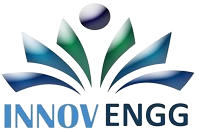In today’s fast-changing regulatory environment, even a small compliance slip can cost organizations millions in fines, damage hard-earned reputations, and erode stakeholder trust. Companies are under constant pressure to meet evolving standards, from financial reporting to data protection and workplace safety. This makes compliance not just a legal requirement but a business necessity.
One of the most powerful tools to safeguard compliance and reduce organizational risks is the internal audit. Far from being a box-ticking exercise, internal audits serve as a proactive shield, identifying gaps before they turn into costly issues. When done right, they provide leaders with clear insights, reinforce accountability, and build a culture of transparency.
In this article, you’ll learn how to strengthen compliance with internal audit best practices. From adopting a risk-based approach to leveraging technology and empowering audit teams, we’ll walk through practical steps you can implement to ensure your organization stays ahead of compliance challenges.
Understanding the Role of Internal Audits in Compliance
Internal audits are systematic reviews of an organization’s operations, controls, and processes. Their purpose is not only to ensure compliance with laws and regulations but also to assess whether internal policies are effective in managing risks. Unlike compliance audits which focus strictly on adherence to external regulatory requirements internal audits take a broader view, examining operational efficiency, risk management, and governance. This makes them an essential tool for regulatory compliance, as they help detect weaknesses before they escalate into violations or penalties. In short, internal audits provide both assurance and improvement opportunities, safeguarding the business against legal, financial, and reputational risks.
Establishing a Risk-Based Audit Approach
Not all areas of an organization carry the same level of compliance risk. A risk-based audit approach ensures resources are directed where they matter most. By identifying high-risk areas such as financial reporting, data security, or workplace safety internal audit teams can prioritize their reviews effectively. This approach allows organizations to allocate time and resources where the likelihood of non-compliance and potential impact is greatest. Linking audit planning directly to risk assessments ensures that compliance activities are both strategic and practical, rather than reactive.
Creating a Strong Internal Audit Framework
An effective internal audit program begins with a well-structured framework. This means setting clear objectives that align with organizational goals and regulatory requirements. Strong policies and procedures should serve as a roadmap, guiding audit activities and ensuring consistency across departments. Equally important is defining roles and responsibilities, so accountability is clear at every level. Whether handled by in-house teams or supported by external auditors, a robust framework creates discipline and reliability in the audit process.
Leveraging Technology and Data Analytics
Modern compliance challenges require modern solutions. Automated audit management tools enable organizations to track processes continuously and flag potential issues in real time. By leveraging data analytics, businesses can detect compliance gaps, spot anomalies, and assess risks more accurately than manual methods allow. Digital platforms also streamline reporting, reduce administrative burdens, and provide a central repository for compliance records—making audits faster, more transparent, and more reliable.
Training and Empowering Audit Teams
Even the best frameworks and tools fall short without capable people. Audit teams need continuous professional development to stay up to date with new regulations, industry standards, and emerging risks. Regular training not only sharpens technical skills but also reinforces a culture of ethics and accountability. Empowering auditors to act independently, question processes, and make unbiased assessments ensures that the internal audit function remains credible and effective.
Conducting Regular and Independent Audits
The frequency of internal audits should be tailored to the size and complexity of the business. High-risk industries may require more frequent reviews, while lower-risk areas can be audited on a rotational basis. Independence is also critical internal auditors should remain objective and free from conflicts of interest. In some cases, bringing in third-party auditors for specialized or highly sensitive areas provides additional assurance and credibility, particularly when regulatory scrutiny is high.
Documenting and Reporting Findings Effectively
The value of an audit lies not just in the review itself but in how findings are communicated. Clear, concise, and actionable reporting ensures that management understands both the risks and the recommended corrective actions. Reports should also align with regulatory documentation standards to satisfy external requirements. Transparency in reporting fosters trust with stakeholders, regulators, and even employees, making it easier to drive meaningful change.
Following Up and Continuous Improvement
An audit’s purpose does not end with reporting. Effective follow-up ensures that recommendations are implemented and that corrective actions deliver measurable improvements. Continuous monitoring helps organizations track progress and avoid repeated mistakes. More importantly, internal audits should embed a mindset of continuous improvement transforming compliance from a reactive necessity into a proactive business advantage.
Conclusion
Strengthening compliance through internal audit best practices is not a one-time effort but an ongoing commitment. By adopting a risk-based approach, building strong frameworks, leveraging technology, and empowering teams, organizations can safeguard themselves against regulatory risks and operate with greater confidence. Internal audits should be seen not just as reactive checks but as proactive tools that add real business value.
The key takeaway: a structured, forward-thinking audit strategy will not only help prevent compliance issues but also build resilience and trust essentials for long-term success.
At Innovengg, we help businesses design and implement robust quality and compliance systems that align with international standards. Whether you’re looking to strengthen internal audits, improve operational efficiency, or prepare for ISO certification, our team can guide you every step of the way.
Ready to strengthen your compliance framework?
Contact Innovengg today to ensure your business stays compliant, resilient, and future-ready.

